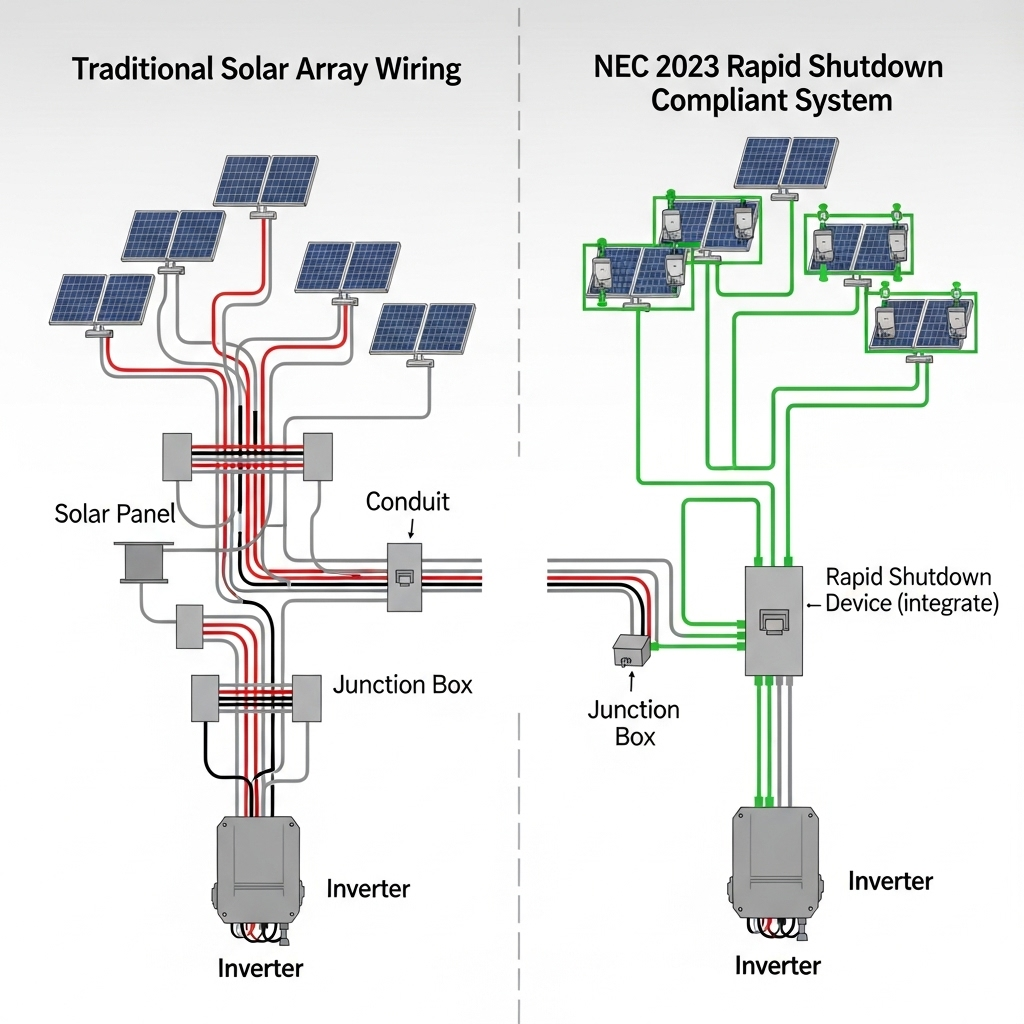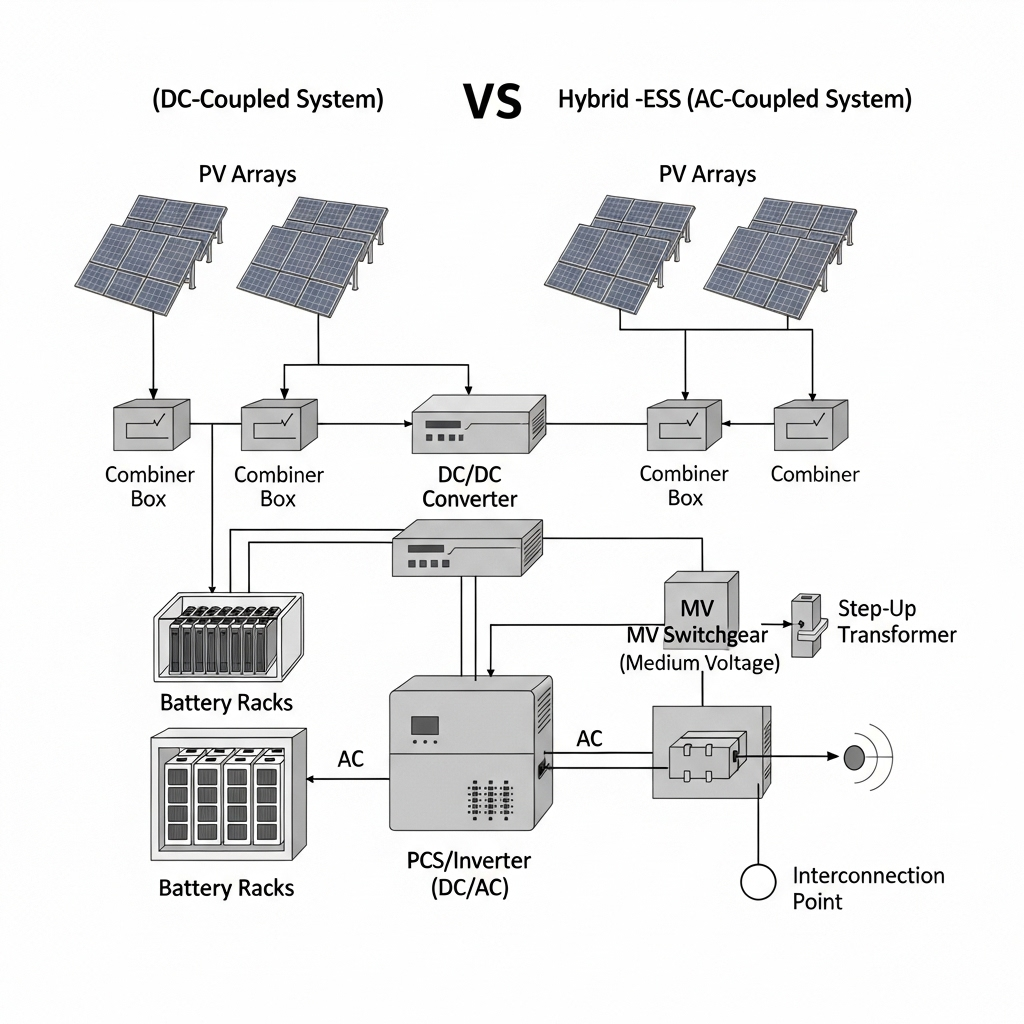Rapid shutdown (RSD) is about firefighter safety first—and cost control second. Working through 2023 code updates across dozens of rooftop jobs, I found that clear alignment with NEC 690.12 plus smart system selection cuts Balance of System (BOS) spend without compromising compliance. This roadmap distills what consistently works and anchors each claim to publicly verifiable sources.
What changed in 2023—and why it matters
The 2023 cycle refines the rapid shutdown framework and recognizes a PV Hazard Control System (PVHCS) pathway within Article 690. In practice, you still design to controlled-conductor limits at and beyond the array boundary, but now you can satisfy “inside the array” control using a PVHCS listed for the purpose (closely connected to UL 3741 testing). See industry and code explanations here: IAEI overview of 690.12 and UL 3741, PVHCS concept in 2023 NEC context, practical 690.12 guidance.
Boundary and voltage/time limits you can verify
- Array boundary: 1 ft (305 mm) from the array in all directions (definition used across training/industry materials).
- Outside boundary: limit controlled conductors to ≤ 30 V within 30 s of initiation. See training/reference notes: reference PDF excerpting 690.12, code portal excerpt.
- Inside boundary: limit to ≤ 80 V within 30 s, or use a listed PVHCS approach per 690.12 options. See IAEI explanation and continuing-education notes.
- Key clarifications: the 2023 cycle refines exceptions (e.g., certain non-enclosed detached structures) and allows manufacturer-listed systems to meet requirements inside/outside the boundary per instructions. See IAEI column (2023).
Two low-cost compliance paths I rely on
1) PVHCS/UL 3741-driven “inside the array” control
Where testing shows the assembled array protects responders, PVHCS can satisfy “inside the boundary” without deploying MLPE everywhere. This reduces part count and wiring complexity while preserving code intent. See industry analysis of UL 3741 and engineering notes.
2) MLPE-focused designs with streamlined wiring
Where site shading or module-level monitoring is needed, MLPE provides a straightforward route to 80 V control inside the boundary and often simplifies homeruns. Labor and conduit savings can offset device cost on complex roofs. See implementer guidance.
Cost levers across the BOS
- Wiring & conduit: array-level control that shortens DC runs reduces fittings/junctions and jobsite time.
- Design coherence: use component sets that are explicitly listed to work together under 690.12; this avoids trial-and-error and re-inspection.
- Documentation & labeling: keep placards and directories aligned with the chosen compliance path; inspectors check that placarding matches the listing method (PVHCS vs. MLPE).
At-a-glance options
| Compliance method | Core idea | Typical BOS effect | Best for |
|---|---|---|---|
| PVHCS (UL 3741) | Listed array assembly controls hazards inside boundary | Lower part count; simplified harnessing | Simple roof planes; clean wire management |
| MLPE-centric | Module-level control to 80 V in 30 s | Higher device count; simpler troubleshooting/monitoring | Shade, complex layouts, granular O&M |
| Hybrid approach | PVHCS inside boundary + listed means outside boundary | Balanced materials and labor | Cost-sensitive residential & small C&I |
Field checklist I use before inspection
- Confirm the array boundary and verify ≤ 30 V outside / ≤ 80 V inside within 30 s according to the listing instructions.
- Ensure shutdown initiation and indicator devices match the chosen listing path.
- Align placards and directories with the method (PVHCS wording vs. traditional RSD/MLPE wording).
- Capture photos and keep a versioned document pack for the AHJ.
FAQ
Do all rooftop systems need RSD under the 2023 cycle?
It depends on local adoption and specific exceptions (for example, certain non-enclosed detached structures). Always check your AHJ’s adopted code and published exceptions. See IAEI 2023 column.
Is rapid shutdown the same as PVHCS?
Rapid shutdown is the overarching requirement in 690.12; PVHCS is a pathway—often tested to UL 3741—for meeting the “inside the array” part of the rule. Conductors outside the boundary still follow the ≤ 30 V in 30 s limit. See IAEI overview.
What numbers should I design to?
Use the 1 ft (305 mm) boundary, ≤ 30 V in 30 s outside, and ≤ 80 V in 30 s inside—or follow the instructions of the listed PVHCS/UL 3741 solution you deploy. See education notes on 690.12(B) and code portal excerpt.
Compliance note: This content is for general information only and not legal advice. Always consult your AHJ and follow the instructions included with the product listing.





Leave a comment
All comments are moderated before being published.
This site is protected by hCaptcha and the hCaptcha Privacy Policy and Terms of Service apply.